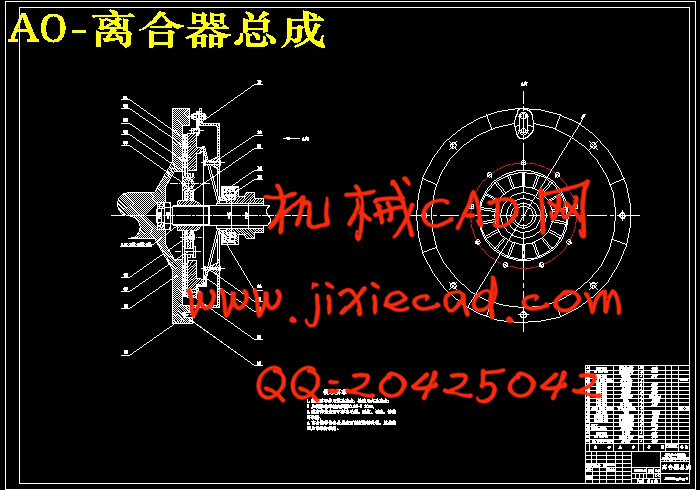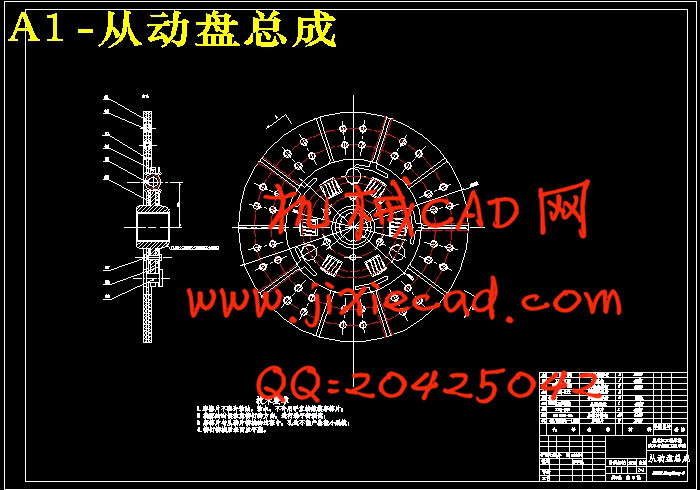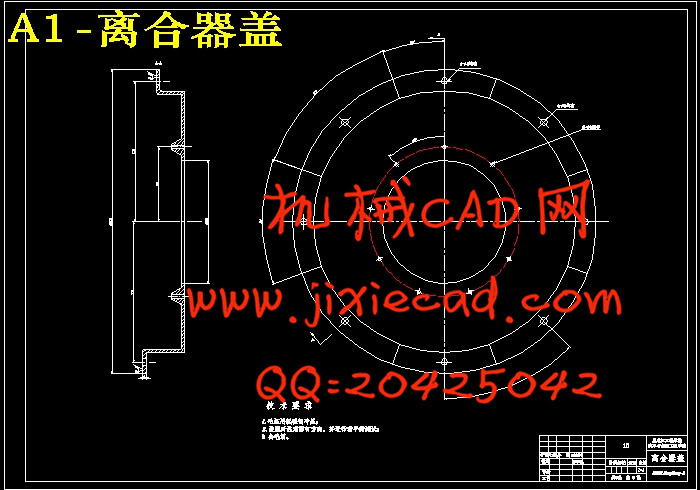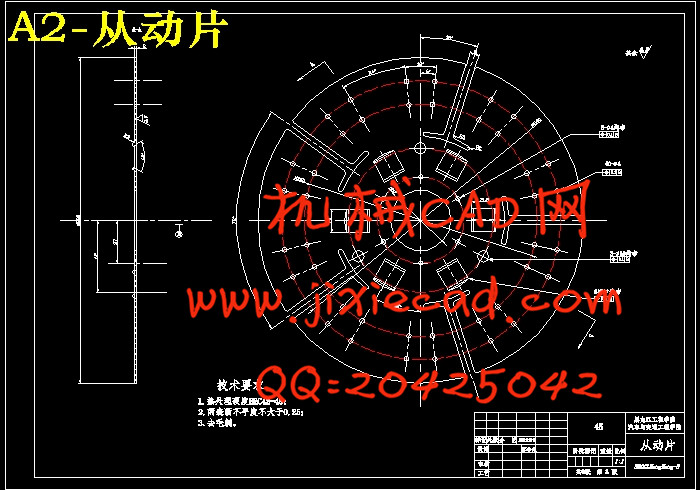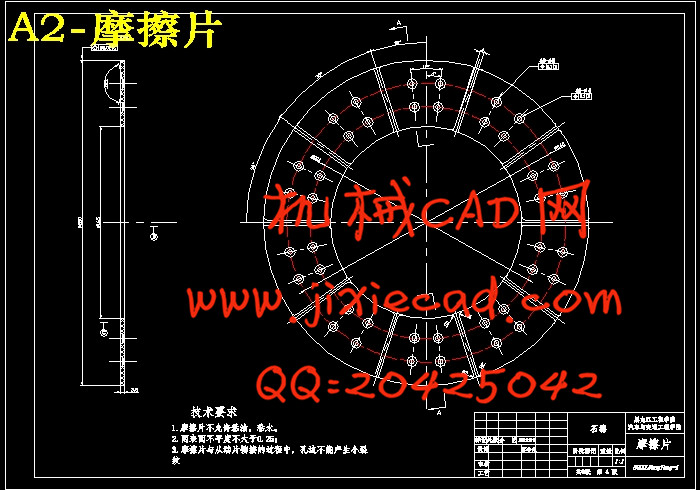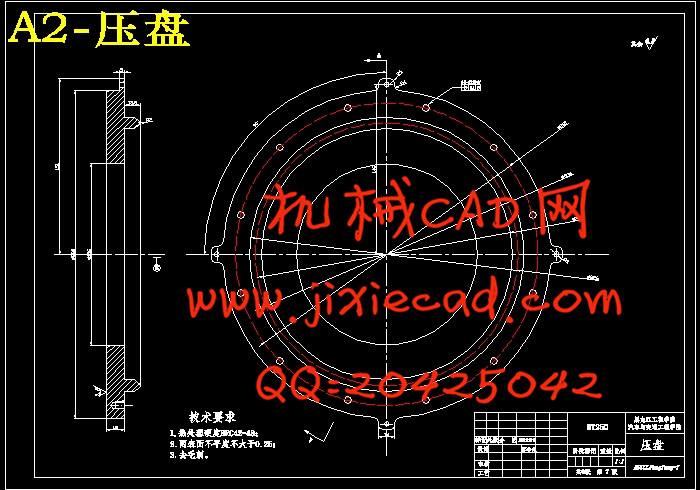设计简介
摘 要
离合器是汽车传动系中的重要部件,主要功用是是切断发动机对传动系的动力传递,保证汽车平稳起步,保证传动系统换挡时工作平顺以及限制传动系统所承受的最大转矩,防止传动系统过载。此设计说明书详细的说明了膜片弹簧离合器的参数选择以及计算过程。
本文根据长安杰勋汽车的性能参数,确定了以推式膜片弹簧离合器作为设计目标。根据推式膜片弹簧离合器工作原理和使用要求,确定了各部分的基本结构及其零部件的制造材料。按照系统化的设计方法确定了离合器的摩擦片外径D、后备系数β、单位压力P、摩擦因数f、摩擦面数z以及离合器间隙Δt,设计了膜片弹簧、从动盘总成、离合器盖总成和分离操纵机构,对压盘进行了温升校核,对摩擦片进行了滑摩功校核。
关键字:离合器;膜片弹簧;从动盘;摩擦片;操纵机构
ABSTRACT
Clutch is an important part of vehicle drivetrain, main function is to cut off engine power to the transmission system, ensure the car a smooth start to ensure works smooth shifting of the transmission system, and limits the maximum torque on the transmission system, prevent drive system overloads. This design gave a detailed description of the process parameters selection and calculation of diaphragm spring clutch.
This article according to the Chang'an JieXun performance parameters of the car, identified as a design goal to push the diaphragm spring clutch. According to push the diaphragm spring clutch work principle and application requirements, determines the basic structure of the parts and components manufacturing materials. Ascertained in accordance with systematic design method of the clutch friction plate diameter d, reserve coefficient β, pressure p, f, the number of friction surface friction coefficient z and clutch gap Δt, design the diaphragm spring, clutch driven plate Assembly, clutch cover Assembly and separation control, checking the temperature rise of the pressure plate, checking the friction of sliding friction.
Key words: Clutch;Diaphragm spring;Driven plate;Friction plate;Control
目 录
摘要 I离合器是汽车传动系中的重要部件,主要功用是是切断发动机对传动系的动力传递,保证汽车平稳起步,保证传动系统换挡时工作平顺以及限制传动系统所承受的最大转矩,防止传动系统过载。此设计说明书详细的说明了膜片弹簧离合器的参数选择以及计算过程。
本文根据长安杰勋汽车的性能参数,确定了以推式膜片弹簧离合器作为设计目标。根据推式膜片弹簧离合器工作原理和使用要求,确定了各部分的基本结构及其零部件的制造材料。按照系统化的设计方法确定了离合器的摩擦片外径D、后备系数β、单位压力P、摩擦因数f、摩擦面数z以及离合器间隙Δt,设计了膜片弹簧、从动盘总成、离合器盖总成和分离操纵机构,对压盘进行了温升校核,对摩擦片进行了滑摩功校核。
关键字:离合器;膜片弹簧;从动盘;摩擦片;操纵机构
ABSTRACT
Clutch is an important part of vehicle drivetrain, main function is to cut off engine power to the transmission system, ensure the car a smooth start to ensure works smooth shifting of the transmission system, and limits the maximum torque on the transmission system, prevent drive system overloads. This design gave a detailed description of the process parameters selection and calculation of diaphragm spring clutch.
This article according to the Chang'an JieXun performance parameters of the car, identified as a design goal to push the diaphragm spring clutch. According to push the diaphragm spring clutch work principle and application requirements, determines the basic structure of the parts and components manufacturing materials. Ascertained in accordance with systematic design method of the clutch friction plate diameter d, reserve coefficient β, pressure p, f, the number of friction surface friction coefficient z and clutch gap Δt, design the diaphragm spring, clutch driven plate Assembly, clutch cover Assembly and separation control, checking the temperature rise of the pressure plate, checking the friction of sliding friction.
Key words: Clutch;Diaphragm spring;Driven plate;Friction plate;Control
目 录
Abstract II
第1章 绪论 1
1.1 引言 1
1.2 选题的目的及意义 3
1.3 离合器的研究现状 3
1.4 设计的主要内容 4
第2章 离合器的基本参数确定 5
2.1 离合器设计所需数据 5
2.2 摩擦片主要参数选择 5
2.3 摩擦片基本参数优化 6
2.4 离合器后备系数β的确定 8
2.5 单位压力P的确定 8
2.6 摩擦因数f摩擦面数z和离合器间隙Δt的确定 9
2.7 本章小结 10
第3章 离合器零部件的设计 11
3.1 膜片弹簧的结构特点 11
3.2 膜片弹簧的变形特性 11
3.3 膜片弹簧的参数确定 12
3.3.1 H/h比值的确定 12
3.3.2 R及R/r确定 12
3.3.3 膜片弹簧起始圆锥底角α 13
3.3.4 膜片弹簧小端半径
3.3.5 分离指数n和切槽宽度 13
3.3.6 压盘加载点半径
3.3.7 膜片弹簧的优化设计 13
3.3.8 膜片弹簧的工作状态分析 14
3.3.9 膜片弹簧的应力计算 16
3.3.10膜片弹簧的支承形式 18
3.4 扭转减震器设计 18
3.5 扭转减震器基本参数确定 19
3.6 减震弹簧设计 19
3.6.1 减震弹簧的安装位置 19
3.6.2 减震弹簧的工作负荷 19
3.6.3 减震弹簧的个数选取 20
3.6.4 减震弹簧的尺寸计算 20
3.7 从动盘总成设计 22
3.7.1 从动盘的设计要求 22
3.7.2 从动片设计 23
3.7.3 从动盘毂设计 23
3.7.4 摩擦片与从动片的紧固方式选择 24
3.8 离合器盖总成设计 24
3.8.1 离合器盖设计 24
3.8.2 压盘的几何尺寸的确定 25
3.8.3 离合器一次接合的温升校核 26
3.8.4压盘的驱动方式 26
3.8.5离合器的散热通风 26
3.9 分离轴承总成设计 27
3.9.1 分离轴承的作用 27
3.9.2 分离轴承的选择 27
3.10 本章小结 27
第4章 离合器操纵机构设计 28
4.1 离合器操纵机构的要求 28
4.2 操纵机构的选择 28
4.3 操纵机构的设计计算 28
4.3.1 踏板行程计算 29
4.3.2踏板力计算 29
4.4 本章小结 30
结论 31
参考文献 32
致谢 33


